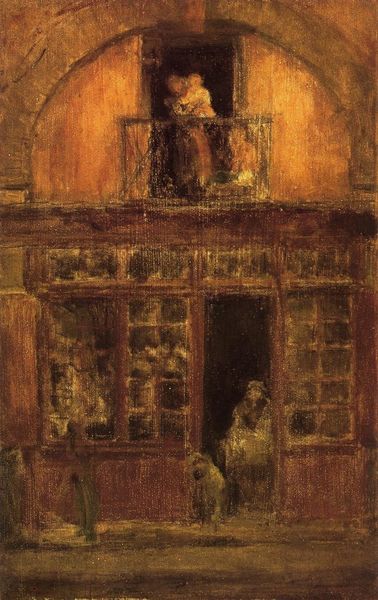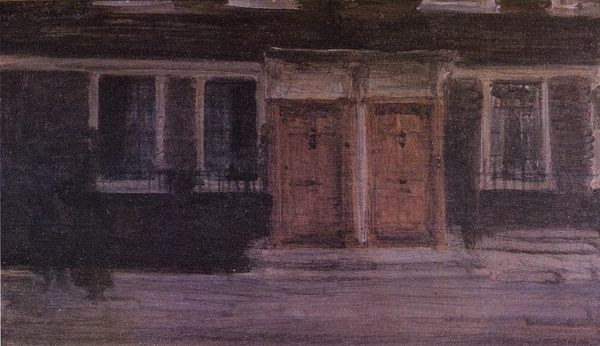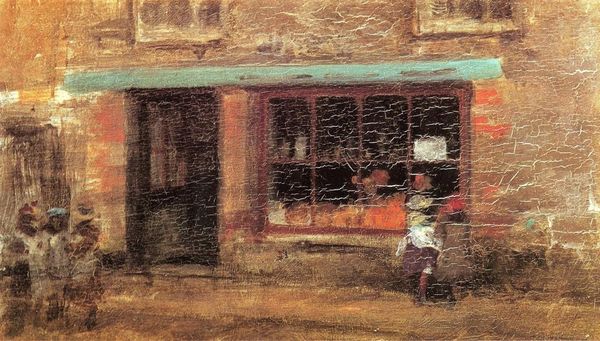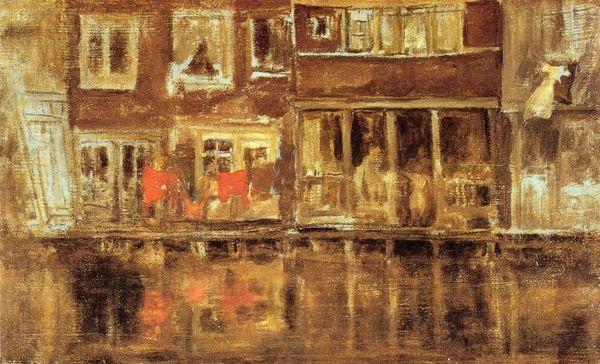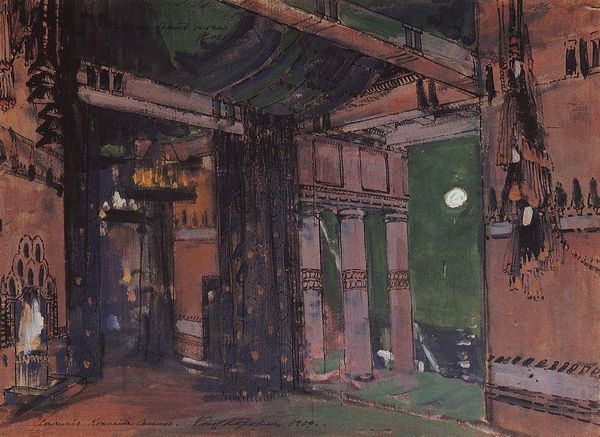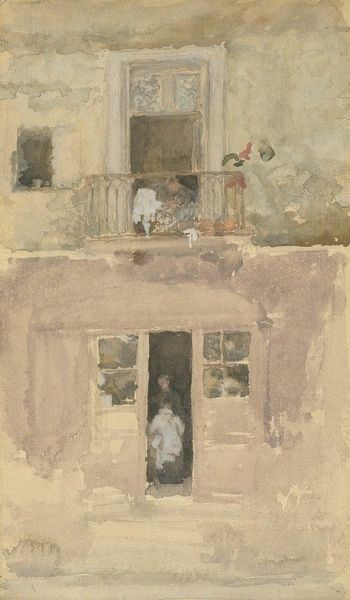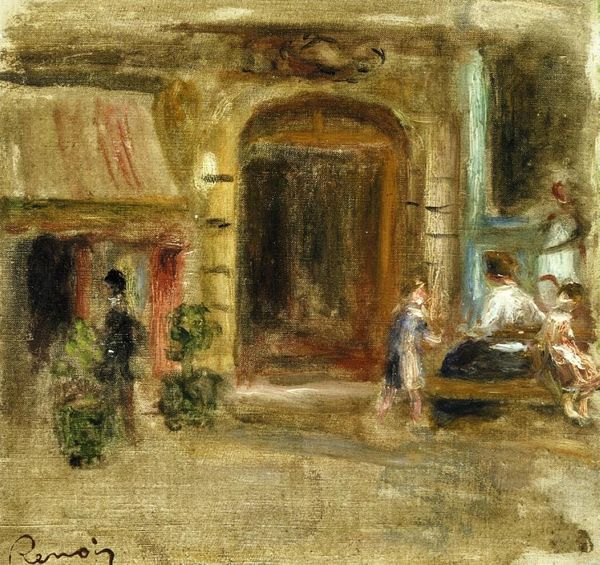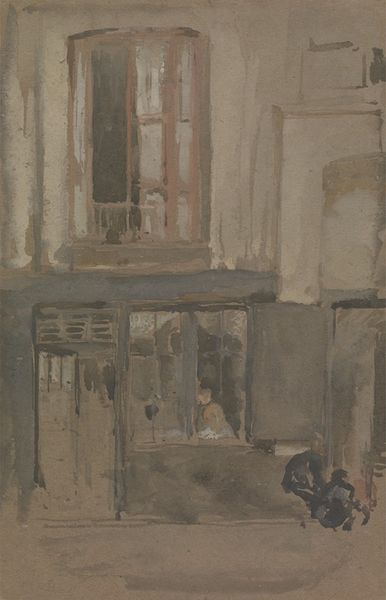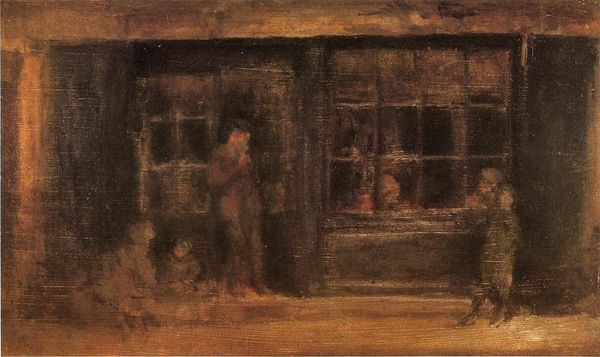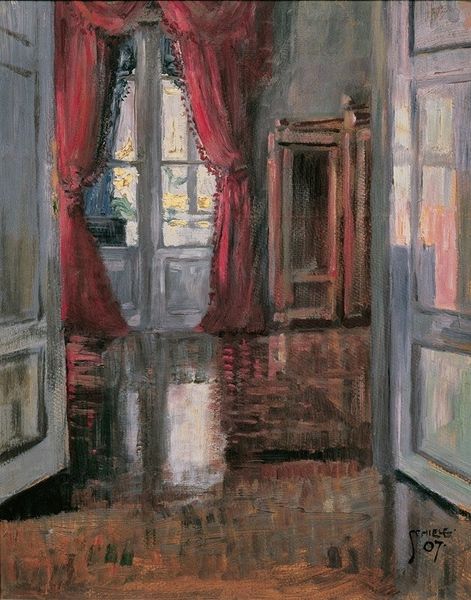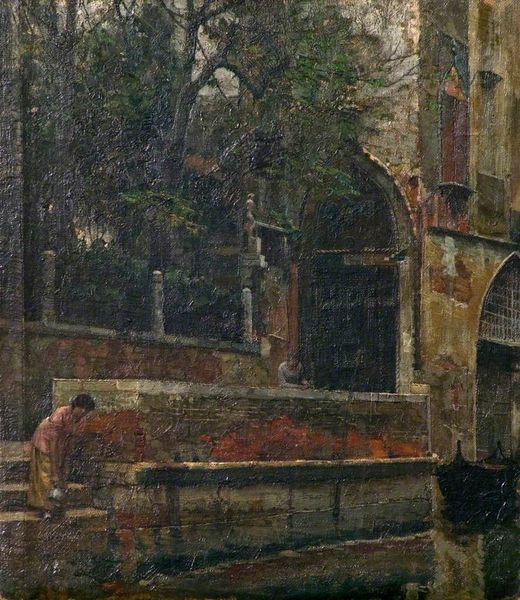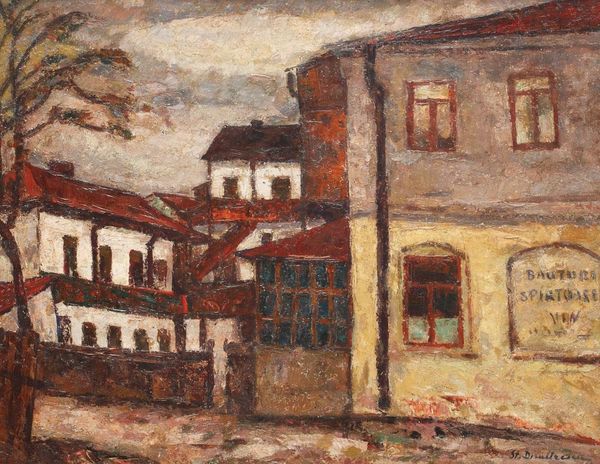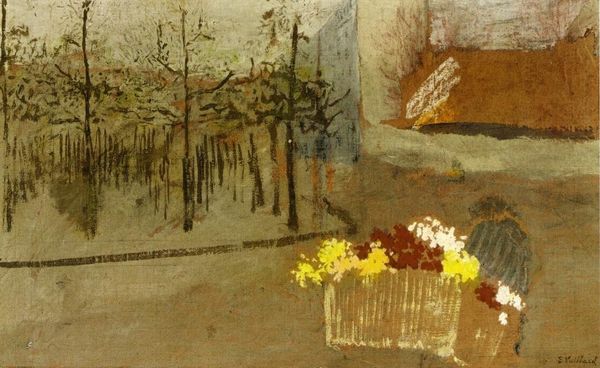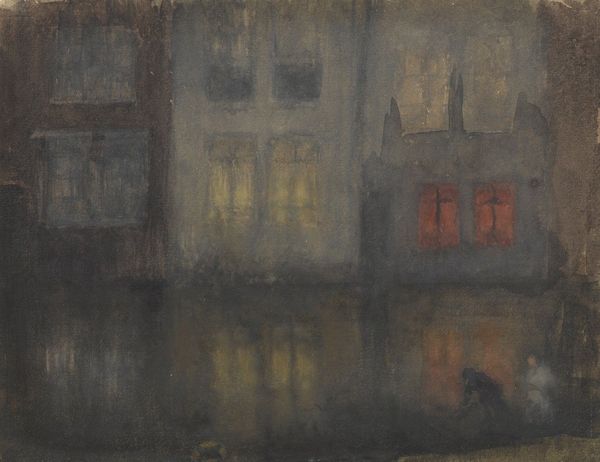
Dimensions: 16.51 x 24.13 cm
Copyright: Public domain
Editor: This is "The Priests Lodging - Dieppe," an oil painting by James Abbott McNeill Whistler from 1897. There's a real quiet stillness to it; it makes me wonder about what life was like back then. What do you see in this piece? Curator: For me, this painting is all about process. Look at how Whistler uses oil paint. It's not about illusionism. Instead, he draws attention to the surface itself, the very materiality of the paint and canvas. Note how he uses the barest amount of pigment, almost staining the canvas. This was done fairly late in his career, at a point when Whistler had seen many younger painters completely embrace 'art for art's sake.' It's an unromantic approach to a cityscape, what do you make of that? Editor: It’s interesting to think about it as ‘art for art’s sake’, where the process is what it's all about. But I still see a building, a facade. Doesn’t the subject matter matter? Curator: Of course, the image signifies. However, think about who occupied such spaces: often, it was those complicit in reinforcing social structures of power. Whistler himself would have likely been reliant on patronage from a powerful elite, or even the church. In a way, this de-romanticised view shows art starting to acknowledge its ties to labour and commerce, just as modern modes of production were changing society. Do you notice how different this is from, say, Baroque cityscapes that aggrandize wealth and power? Editor: I see what you mean. Instead of portraying grand historical scenes, he’s calling attention to the making. Thanks for helping me consider that link. Curator: It's an intriguing direction to approach artwork, for sure!
Comments
No comments
Be the first to comment and join the conversation on the ultimate creative platform.
